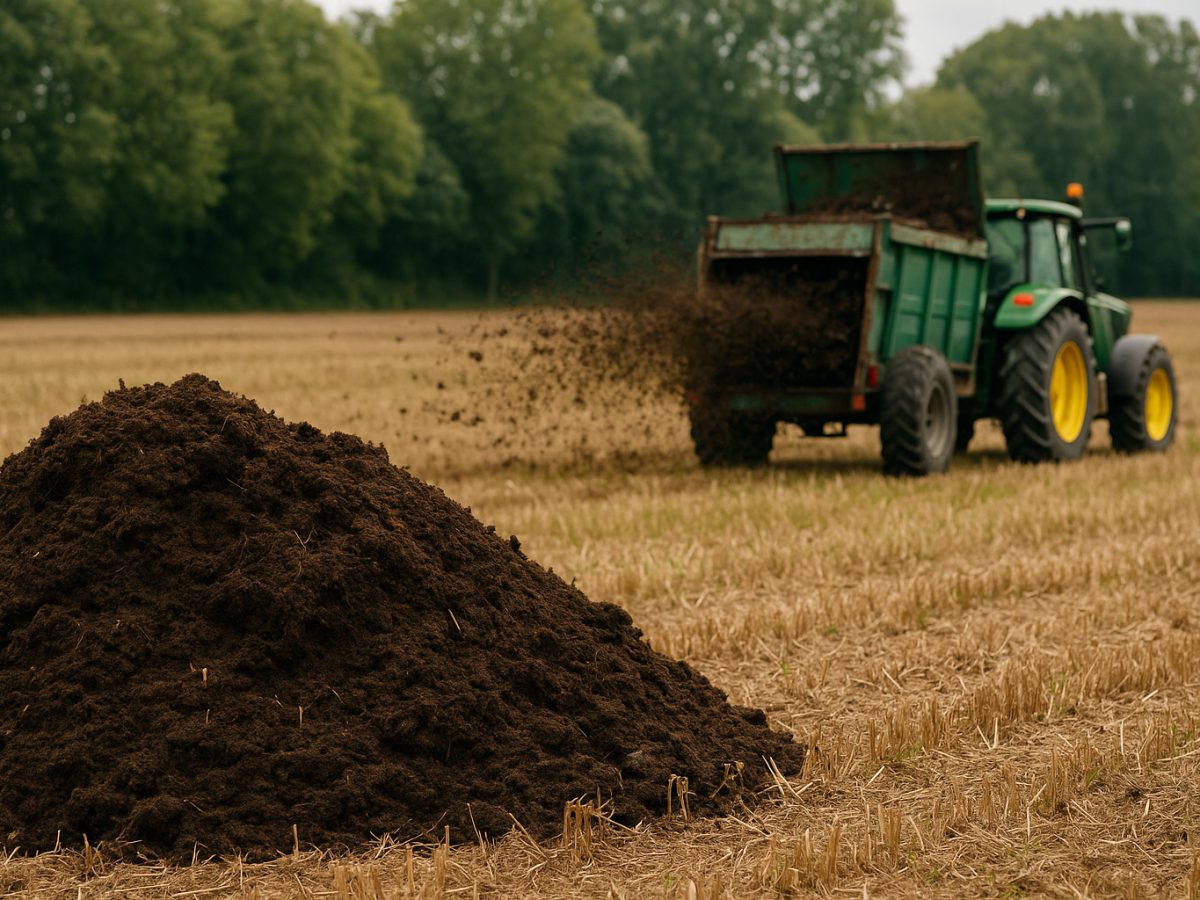
From Waste to Fertiliser: Smart Uses for Farm Leftovers
New Zealand farmers are turning yesterday’s waste into today’s resource. Farm leftovers like manure, effluent, crop stubble, and surplus horticultural produce are no longer dismissed as problems. They are becoming key inputs in a circular model that feeds soil, reduces costs, and supports sustainable productivity. The shift is reshaping how farms manage nutrients, energy, and organic matter.
Why Farm Waste Holds Value
Conventional farming often follows a linear pattern: extract, produce, discard. That model leaves nutrient-rich waste underutilised, exposes soil to depletion, and incurs higher input costs. A circular approach aims to recycle outputs back into productive use.
Manure, effluent, and crop residues contain nitrogen, phosphorus, potassium, and organic matter — all critical for soil fertility. Processing or applying these correctly can reduce dependency on synthetic fertilisers, improve soil structure, and support biological activity underground. Done well, it also cuts greenhouse gas emissions and curbs waterway pollution.
Effluent and Manure: Liquid and Solid Gold
New Zealand’s dairy and livestock industries generate massive quantities of effluent and manure. When applied with care, these become a low-cost, high-value fertiliser substitute.
Key methods include:
- Direct Application
Applying effluent to pasture is common, especially among dairy farms. A 400-cow herd produces enough effluent to supply roughly $10,000 worth of nutrients annually. The liquid provides readily available nitrogen, phosphorus, and potassium to growing grass. - Precision Spreading Tools
The DairyNZ Farm Dairy Effluent Spreading Calculator supports smarter application by factoring in soil moisture, nutrient load, and weather. This helps avoid runoff and ensures nutrients go where needed. - Composting Solid Manure
Animal manure and bedding can be composted to produce a stable, slow-release soil conditioner. This reduces volume, kills pathogens, and produces what many farmers refer to as “black gold.” The compost improves soil moisture retention, aeration, and microbial diversity.
Composting Barns: More Than Shelter
A composting barn isn’t just a roof over cows’ heads. It’s a year-round nutrient recycling hub. These barns combine animal comfort with continuous composting. Bedding materials like sawdust or wood chips are tilled daily to encourage aerobic breakdown of waste.
Benefits include:
- Reduced pugging and pasture damage during wet months
- Improved animal welfare and lower somatic cell counts
- Organic compost output for paddock application
- Fertiliser savings through recycled nutrients
Although initial investment ranges between $3,000 and $4,500 per cow, farms report positive returns through improved milk production and soil health. A South Waikato case study saw nitrogen leaching reduced by 45% after implementing a composting barn.
Horticultural and Crop Waste: Hidden Assets
Fruit and vegetable production creates large volumes of unmarketable produce. These discards often end up in landfill or rot in paddocks. But that’s changing.
- Food Powders and Extracts
Surplus produce can be upcycled into powders, concentrates, or nutraceutical ingredients. One Kiwi venture turns otherwise wasted fruits into high-value products while generating biogas and fertiliser as byproducts. - Crop Residue Recycling
Leaving stubble in paddocks instead of burning it helps maintain soil carbon, improve texture, and boost water-holding capacity. Integrating cover crops between planting seasons helps fix nitrogen and suppress erosion.
Anaerobic Digestion: Fuel and Fertiliser in One
Anaerobic digestion breaks down organic material in an oxygen-free chamber to produce biogas and digestate. The gas powers farm operations. The digestate, rich in nutrients, becomes fertiliser.
Although the technology is still gaining traction in New Zealand, early adopters show strong potential.
- A North Canterbury dairy with 900 cows installed a prototype digester
- A Taranaki pig farm is capturing methane for on-farm energy
- Trials show enough biogas can be generated to heat water year-round
- The residual digestate can be spread on paddocks as a fertiliser
Financial feasibility depends on herd size and available incentives, but the dual benefit of clean energy and nutrient recovery is clear.
Regulatory Considerations
Farmers applying effluent, compost, or digestate must follow rules set by regional councils. These aim to protect groundwater and surface water from nitrate contamination.
Key rules include:
- Annual nitrogen application caps
- Buffer zones near waterways
- Storage capacity for effluent during wet seasons
- Compliance with NZ Standard 4454:2005 for compost quality
For composting operations using materials from off-farm, testing and compliance are mandatory to avoid heavy metals or pathogens entering the food chain.
Simple Steps for Smarter Waste Use
To integrate waste-to-fertiliser systems effectively, farmers can start small and scale based on outcomes.
Practical ideas:
- Use effluent calculators to optimise pasture application
- Trial composting manure with straw or sawdust bedding
- Retrofit an existing shelter into a composting barn
- Apply crop stubble and plant cover crops post-harvest
- Partner with local food producers to process horticultural surplus
- Explore funding options for anaerobic digesters
Farms That Close the Loop
Turning farm leftovers into fertiliser or fuel builds independence and cuts operational risks. It supports long-term productivity by focusing on soil health, nutrient cycling, and on-site energy. The move to circular systems isn’t theoretical. It’s already underway.
With more tools, case studies, and science supporting the shift, farms across New Zealand are proving that waste has no business being wasted.




No Comment